Email Template
Elevate Your Marketing with the Salesforce Email Template Builder
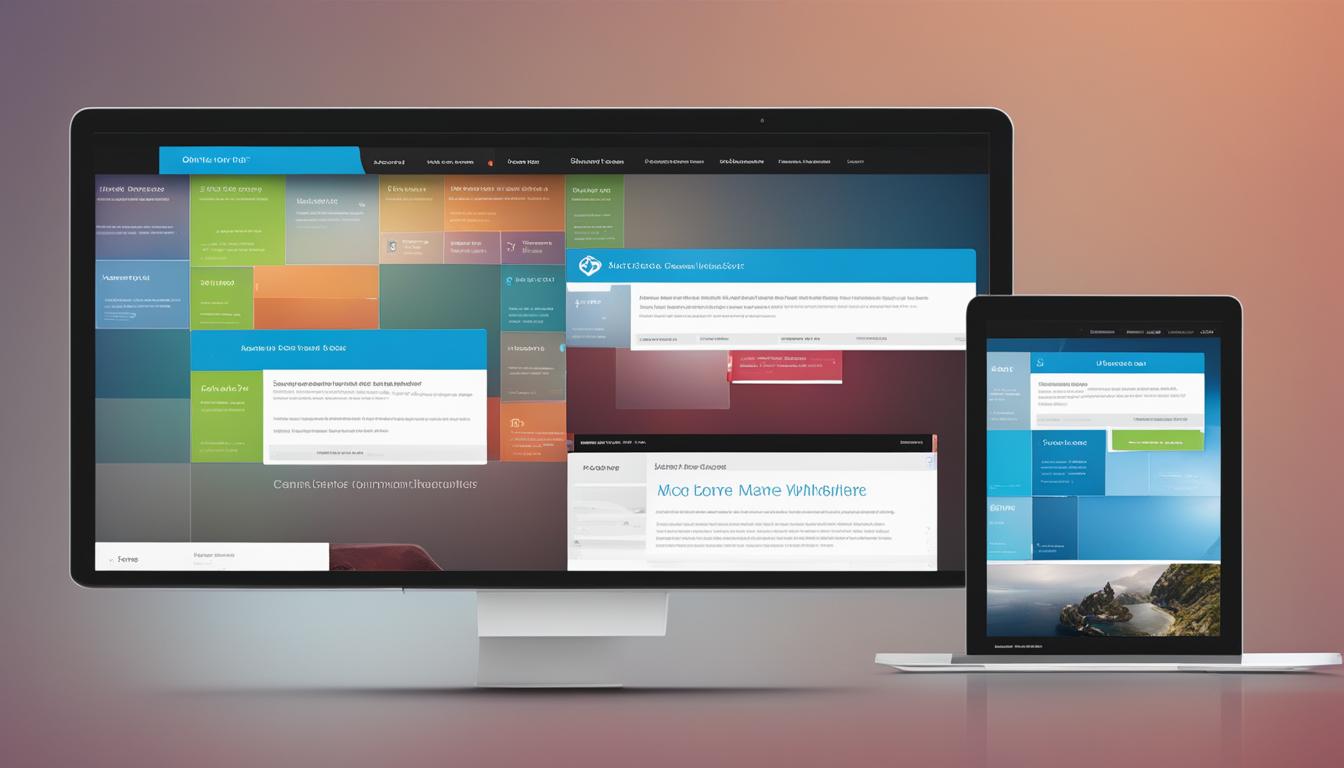
The Salesforce Email Template Builder serves as an effective solution for quickly crafting professional and captivating emails. This feature enables the personalization of email templates, ensuring they work perfectly with Salesforce to enhance your marketing outreach and boost conversion rates. It’s an essential asset for engaging new prospects, following up with potential clients, or maintaining relationships with current customers. Any marketer would find the Salesforce Email Template Builder indispensable.
Key Takeaways:
- The Salesforce Email Template Builder is a powerful tool for creating engaging and professional emails.
- Customize email templates that seamlessly integrate with Salesforce.
- Maximize your outreach efforts and drive conversions.
- Prospect new leads, follow up with potential clients, and nurture existing customers.
- The Salesforce Email Template Builder is a must-have for any marketer.
The Basics of a Compelling Email Sales Template
When it comes to email sales templates, crafting a compelling message is key to grabbing your recipient’s attention and driving results. In this section, we will explore the essential elements of an effective sales email template that can help you achieve your marketing goals.
Define Your Goal
Before creating your email template, it’s important to define your goal. Ask yourself what action you want your recipients to take after reading your email. Whether it’s making a purchase, scheduling a demo, or signing up for a newsletter, having a clear goal in mind will guide your email’s content and structure.
Keep It Short and Concise
In today’s fast-paced digital world, attention spans are shorter than ever. To ensure your email gets read, keep it concise and to the point. Avoid lengthy paragraphs and focus on delivering your message in a clear and skimmable format.
Use bulleted lists, indents, and hyperlinks to highlight the most important features and benefits of your product or service. This will help your recipients quickly grasp the value you are offering.
Personalize Your Email
To make your sales email template more engaging, personalize it by addressing the recipient by their name. This small touch can make a big difference in grabbing their attention and making them feel valued.
If you have had any previous interactions with the recipient, such as a conversation or meeting, mention it in the email to establish a personal connection. This shows that you have taken the time to tailor the email specifically for them.
Example Email Sales Template
Hi [Recipient’s Name],
I hope this email finds you well. I wanted to reach out because I noticed that your company is [specific mention of recipient’s industry or pain point]. As an expert in [your industry/area], I wanted to share some insights on how our [product/service] can help address [specific problem] and achieve [desired outcome].
Here are a few key benefits of our [product/service]:
- Benefit 1: [Briefly describe benefit 1]
- Benefit 2: [Briefly describe benefit 2]
- Benefit 3: [Briefly describe benefit 3]
We have successfully partnered with companies like [Client 1] and [Client 2], helping them achieve [specific results]. I would love to discuss how we can tailor our [product/service] to meet your unique needs during a brief call.
Are you available for a quick call next week? Please let me know your availability, and I’ll be happy to schedule a time that works for you.
Thank you for considering [Your Company Name].
Best Regards,
[Your Name]
[Your Title/Company]
Creating a compelling email sales template requires careful consideration of your goals, content, and personalization. By following these best practices, you can create a sales template that resonates with your audience and drives action.
Building Rapport with the Sales Template Opening Line
The opening line of your sales email is crucial in building rapport with your prospects. It’s the first impression they have of you and sets the tone for the rest of the email. To make a connection and create a personalized experience, consider mentioning mutual connections, events, or previous interactions you have had with the recipient. This shows that you have taken the time to research and understand their background, making the email feel more relevant and engaging.
Avoid diving directly into the sales pitch at the beginning. Instead, focus on building a genuine connection and establishing common ground. By showing a genuine interest in your prospects and their needs, you can build trust and rapport right from the start. Remember that people are more likely to engage with someone they feel a connection with, so take the time to craft an opening line that resonates with your audience.
To illustrate this point, here’s an example of an effective opening line:
“Hi [Prospect’s Name], I hope you’re doing well. We recently attended the [Event Name] where we had the chance to connect with [Mutual Connection’s Name]. They spoke highly of your expertise in [Inquiry Topic], and I thought it would be a great opportunity to reach out and discuss how we can support your [Prospect’s Company Name]’s goals.”
This opening line shows that you have taken the time to research the prospect and have a genuine interest in their business. It demonstrates that there is a relevant connection between you and the recipient, establishing a positive rapport right from the start.
Building Rapport in Sales Email – Dos and Don’ts:
- Do: Research your prospects and mention relevant connections or events.
- Do: Show a genuine interest in the recipient’s needs and goals.
- Do: Keep the opening line personalized and engaging.
- Don’t: Dive directly into the sales pitch in the opening line.
- Don’t: Use generic or impersonal opening lines that lack relevance.
By following these tips and taking the time to craft a personalized opening line, you can build rapport with your prospects and increase the chances of engagement and conversion.

Crafting the Best Sales Emails’ Body
The body of your sales email plays a vital role in capturing your prospect’s attention and compelling them to take action. To create the best sales emails, you need to focus on addressing and solving the problems your prospects face. By highlighting a fundamental issue they may have, you position yourself as the solution they’ve been searching for.
One effective way to make your sales email stand out is by backing up your claims with relevant data. Statistics and concrete examples can provide credibility and show that you understand your prospect’s pain points. This data-driven approach adds value to your email and increases the chances of engagement.
When crafting the body of your sales email, it’s crucial to keep the copy concise and to the point. Avoid lengthy paragraphs and instead, use formatting techniques such as bullets, lists, and hyperlinks to guide your prospects through the email. This not only improves readability but also helps your prospects grasp the key points quickly.
Providing valuable insights is another effective strategy for creating compelling sales emails. By sharing industry knowledge, tips, or strategies related to your prospect’s challenges, you position yourself as a trustworthy source of information. This approach establishes your expertise and builds credibility, increasing the likelihood of a positive response.
Solving Problems and Offering Solutions
When structuring the body of your sales email, take a problem-solving approach. Begin by identifying the main pain point your prospect is facing and provide a concise explanation of how your product or service can help alleviate their challenges. Make sure to emphasize the unique benefits and features that set your offering apart from the competition.
Remember, your sales email is not about selling; it’s about offering a solution. Focus on how your product or service can solve your prospect’s problem and benefit their business.
For greater impact, consider incorporating testimonials or case studies that demonstrate how your solution has helped similar companies overcome similar challenges. Social proof reassures prospects that your offering is effective and trusted by others in their industry.
To conclude the body of your sales email, include a strong call to action (CTA) that clearly and succinctly directs your prospects to the next step. Whether it’s requesting a demo, scheduling a call, or downloading a resource, ensure your CTA is actionable and compelling.
Example of a Best Sales Emails’ Body
Below is an example of a well-crafted sales email body:
Hi [Prospect’s Name],
Are you struggling to [highlight the specific problem] and looking for a proven solution? Look no further! Our [product/service] has helped [number of satisfied customers] businesses just like yours address this very challenge and achieve remarkable results.
Here are three key reasons why our [product/service] stands out:
- Feature 1: [Briefly highlight the key feature and its benefits]
- Feature 2: [Briefly highlight the key feature and its benefits]
- Feature 3: [Briefly highlight the key feature and its benefits]
But don’t just take our word for it! Here’s what one of our customers had to say:
“[Customer testimonial highlighting specific results or benefits].”
I’d love to show you firsthand how our [product/service] can benefit your business. Could we schedule a brief call next week to discuss your challenges in more detail? Please let me know what works best for you, and I’ll make the necessary arrangements.
Looking forward to connecting with you and helping you overcome [highlighted problem]!
Best regards,
[Your Name]
With a well-crafted email body that focuses on problem-solving, showcases your unique selling points, and includes a compelling call to action, you can create effective sales emails that drive engagement and conversions.
Closing Your Sales Email with a Call to Action
When it comes to closing your sales email, the key is to provide a clear and compelling call to action. This call to action should guide your prospects towards the next step in the sales process, prompting them to take action and move closer to becoming a customer. By effectively leveraging your sales email call to action, you can significantly increase your chances of closing the sale. Let’s explore some best practices for crafting a compelling call to action that drives results:
- Be Clear and Direct: Your call to action should leave no room for confusion or ambiguity. Clearly articulate what you want your prospects to do next, whether it’s scheduling a call, signing up for a demo, or providing additional information. Use concise and action-oriented language to communicate your intentions.
- Create a Sense of Urgency: To motivate your prospects to act quickly, inject a sense of urgency into your call to action. Highlight limited-time offers, upcoming deadlines, or exclusive opportunities to create a sense of FOMO (fear of missing out) and drive them to take immediate action.
- Offer Value: Make your call to action enticing by showcasing the value your prospects will receive by taking the next step. Clearly communicate the benefits they can expect, such as cost savings, increased productivity, or improved results. Use persuasive language to convey the value proposition effectively.
- Use a Strong Command Verb: Start your call to action with a powerful action verb that grabs attention and compels your prospects to act. Verbs like “schedule,” “register,” “join,” “start,” or “discover” can be highly effective in driving action.
- Add a Personal Touch: Personalize your call to action by addressing your prospects by name and referencing any previous interactions. This personal touch helps establish a connection and makes your call to action feel more tailored and relevant to their needs.
By implementing these best practices, you can create a compelling closing sales email that motivates your prospects to take the next step. Remember, the ultimate goal is to guide them towards the desired action and increase your chances of converting them into customers. Now, let’s take a look at an example of a well-crafted sales email call to action:
“Hi [Propect’s Name],
Thank you for considering our [Product/Service]. We believe it can truly transform your business and help you achieve [specific goal]. To get started, let’s schedule a call at your convenience to discuss how we can tailor our solution to meet your unique needs. Simply click the link below to view my calendar and select a time slot that works best for you:
Schedule a Call
I look forward to connecting with you and exploring how we can take your [department/company] to the next level.
Best Regards,
[Your Name]
”
By incorporating these strategies into your closing sales email, you can optimize your chances of success and drive conversions. Remember, the closing call to action is the final step in your sales email, so make it count and guide your prospects towards the next phase of the sales process.
Maximizing Email Marketing with Salesforce Templates Supported by MassMailer
When it comes to email marketing, the right tools can make all the difference. That’s where MassMailer comes in. This powerful tool seamlessly integrates with Salesforce, allowing you to take your email campaigns to the next level.
With MassMailer, you gain access to a wide range of customizable Salesforce templates. These templates are designed to cater to your specific business needs, ensuring that your email campaigns are engaging and impactful. Whether you’re reaching out to prospects or nurturing existing customers, MassMailer provides you with the templates you need to communicate effectively.
But it doesn’t end there. The integration between Salesforce templates and MassMailer is seamless, making it easy to create, personalize, and send your email campaigns directly from your Salesforce platform. This means you can maximize your marketing efforts without the hassle of switching between different tools.
With MassMailer, you can personalize your email campaigns, ensuring that every communication is relevant and tailored to your audience. Personalization is key to capturing the attention of your recipients and driving conversions. MassMailer allows you to merge data from Salesforce into your emails, so you can address recipients by name and include other personalized details.
Furthermore, MassMailer provides powerful analytics and reporting features, giving you valuable insights into the performance of your email campaigns. With these insights, you can track engagement, measure conversions, and refine your strategies to achieve better results.
So, why settle for generic email campaigns when you can supercharge your marketing with Salesforce templates supported by MassMailer? Take advantage of this powerful combination and see the impact it can have on your email marketing campaigns.
Experience the benefits of MassMailer and Salesforce templates today and elevate your email marketing to new heights.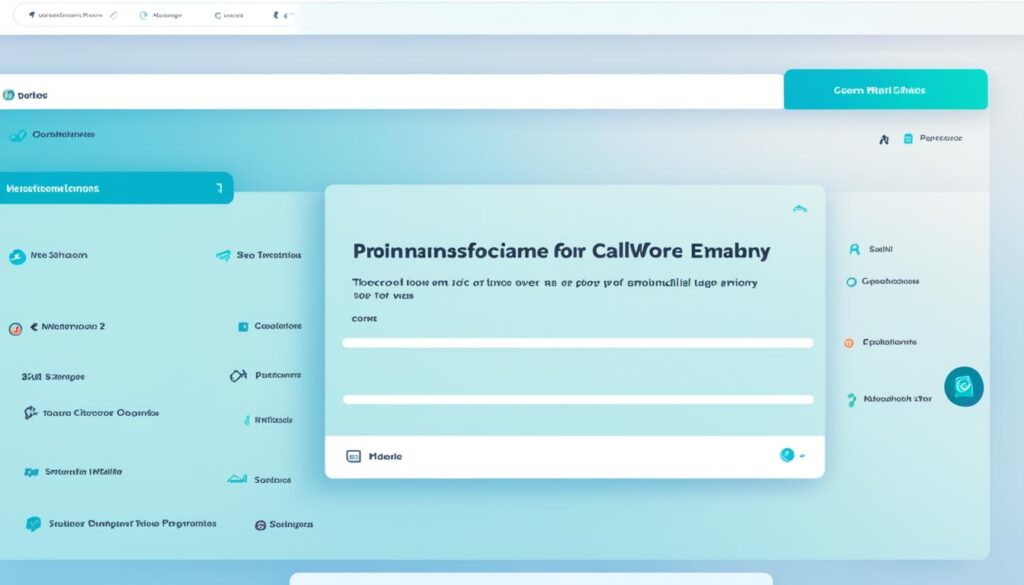
Finding and Engaging Prospects in Outreach
Outreach is a powerful platform that helps you identify and engage with prospects in a highly efficient manner. With its advanced features and user-friendly interface, Outreach streamlines your prospecting efforts, allowing you to connect with potential customers more effectively than ever before.
One of the key benefits of Outreach is its ability to filter prospects based on various stages of engagement. Whether they are new leads, individuals who have already responded, or those who haven’t replied yet, Outreach allows you to segment your prospects accordingly. This segmentation helps you focus your efforts on the most promising candidates and tailor your messaging to their specific needs and interests.
By leveraging Outreach’s sequencing feature, you can automate the engagement process and customize your outreach for each prospect. This means you can craft personalized and targeted messages that resonate with your audience, increasing the likelihood of a positive response. With Outreach, you can efficiently manage your prospecting efforts and nurture relationships with your prospects at scale.
Key Features of Outreach for Finding and Engaging Prospects:
- Advanced filtering options to segment prospects based on their engagement stage
- Automated sequencing for efficient and personalized outreach
- Customizable messaging to tailor your communication to each prospect
- Efficient management of prospecting efforts
With Outreach, you can supercharge your prospecting efforts and maximize your chances of success. Its intuitive interface and extensive range of features make it an indispensable tool for any marketer looking to find and engage prospects effectively.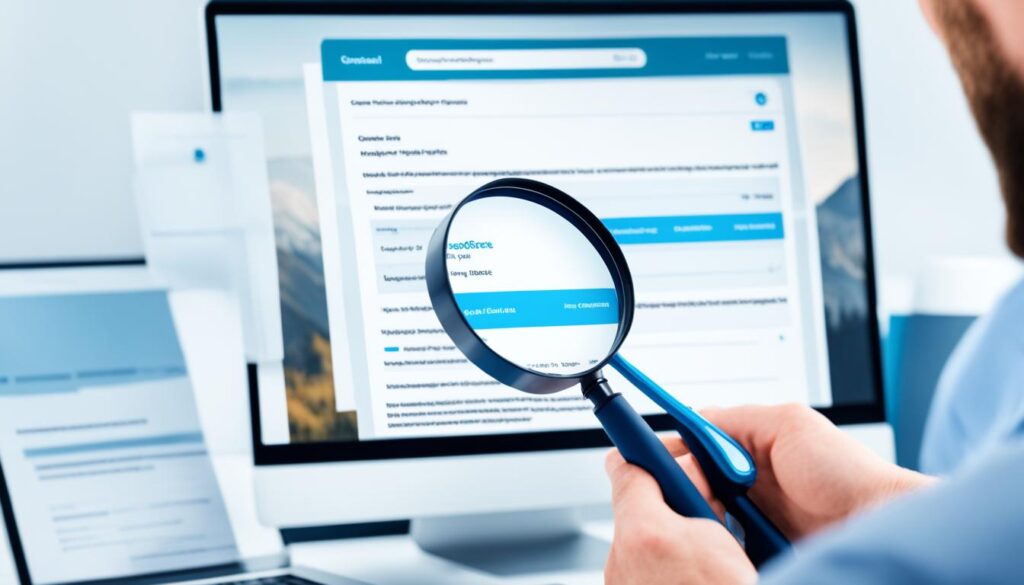
| Prospecting in Outreach | Finding Prospects | Engaging Prospects |
|---|---|---|
| Segment prospects based on engagement stage | Filter prospects by various criteria | Create personalized and targeted messages |
| Automate the engagement process | Identify high-potential leads | Increase response rates |
| Manage prospecting efforts efficiently | Ensure efficient use of resources | Nurture relationships with prospects |
By leveraging the power of Outreach, you can streamline your prospecting efforts, connect with the right people, and increase your chances of converting prospects into valuable customers.
Executing Tasks in Outreach
In Outreach, you have the capability to efficiently execute various tasks to engage with your prospects and effectively manage your outreach efforts. The platform allows you to send emails and make calls, providing you with the tools to connect with prospects on multiple channels.
When executing tasks in Outreach, you have the flexibility to personalize the content and tailor it to the specific needs and preferences of your prospects. You can add a personal touch to your emails, making them more relatable and engaging. Similarly, when making calls, you can customize your communication to resonate with your prospects, increasing the likelihood of building meaningful connections.
One of the key advantages of executing tasks in Outreach is the ability to schedule them at the optimal time. You can strategically plan your outreach efforts by selecting the most suitable time to send emails or make calls. This ensures that your messages reach your prospects when they are most likely to be receptive, increasing the chances of generating a positive response.
Furthermore, Outreach provides a comprehensive task management system that allows you to stay organized and track your progress. You can easily monitor which tasks have been completed, which are pending, and which require follow-up. This enables you to efficiently move prospects through the outreach sequence, ensuring that no opportunities slip through the cracks.
By executing tasks effectively in Outreach, you can seamlessly manage your outreach efforts, enhance your engagement with prospects, and work towards achieving your sales goals.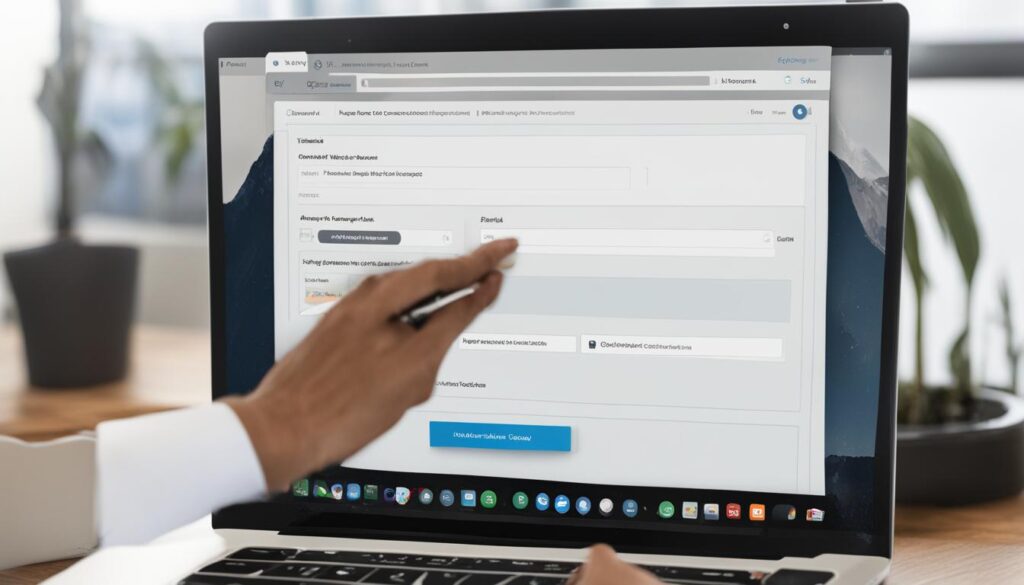
“Outreach provides a comprehensive task management system that allows you to stay organized and track your progress.”
Managing Sequenced Prospects in Outreach
In Outreach, effective management of your sequenced prospects is crucial to optimize your outreach efforts and increase your chances of success. With Outreach’s robust filtering capabilities, you can easily manage the prospects that you have already sequenced by applying specific criteria relevant to your objectives.
By utilizing the prospect filtering feature, you can modify, engage, or pause prospects based on their stage in the outreach process. This flexibility allows you to tailor your approach to each prospect, ensuring that your communication is relevant and personalized. Whether your goal is to nurture leads, close deals, or build relationships, Outreach provides the tools you need to effectively manage your prospects.
When managing sequenced prospects in Outreach, you can:
- Modify Prospects: Customize the content and messaging of your outreach for individual prospects based on their unique needs and preferences.
- Engage Prospects: Continuously engage with prospects by adding automated tasks, such as follow-up emails or scheduled calls, to your sequences.
- Pause Prospects: Temporarily pause engagement with prospects if they are not currently responsive or require further nurturing.
By employing these management strategies, you can optimize your communication and tailor your outreach efforts to effectively engage with your sequenced prospects.
Example: Managing Sequenced Prospects in Outreach
To illustrate the management capabilities in Outreach, consider the following scenario:
You are a sales representative at XYZ Company and have a sequence of prospects in Outreach who have shown interest in your product. Using Outreach’s filtering options, you can select prospects who have not responded to your initial outreach email.
Once the prospects are filtered, you can modify the content of your follow-up email to address any concerns or objections they may have. Personalization is paramount, and you can leverage information about the prospect’s industry or specific pain points to create a more compelling message.
After modifying the content, you can easily add the customized follow-up email to the sequence and engage prospects with a personalized touch. By following up in a timely and tailored manner, you increase the chances of eliciting a response and moving the prospect further along the sales funnel.
However, if certain prospects require additional nurturing or are unresponsive, you have the option to pause their engagement temporarily. This allows you to focus your efforts on prospects who are more likely to convert, while still keeping the unresponsive prospects in your outreach pipeline for future follow-ups.
Through effective management of sequenced prospects in Outreach, you can ensure that your outreach efforts are efficient and targeted, ultimately increasing your chances of converting prospects into valuable customers.
| Actions | Benefits |
|---|---|
| Modify prospects based on specific criteria | Customize outreach to meet individual prospect needs |
| Engage prospects with automated tasks | Ensure timely follow-ups and consistent communication |
| Pause engagement with unresponsive prospects | Focus efforts on prospects more likely to convert |

Managing Scheduled Emails and Existing Tasks in Outreach
In Outreach, effective communication with your prospects relies on managing scheduled emails and existing tasks. By staying organized and proactive, you can ensure timely and efficient outreach that drives results. Let’s explore how you can effectively manage your scheduled emails and tasks in Outreach.
Managing Scheduled Emails
When it comes to managing scheduled emails in Outreach, you have full control over their content and timing. The ability to view and modify scheduled emails allows you to make any necessary adjustments to ensure your message resonates with your prospects. Whether it’s refining the email copy, updating personalization, or adjusting the send time, Outreach empowers you to optimize your outreach strategy at any stage of the process.
Furthermore, by leveraging the power of scheduled emails in Outreach, you can maintain consistent and regulated communication with your prospects. This feature ensures that your emails reach your prospects at the desired time, helping you stay on track and nurture relationships effectively.
Completing Tasks
Managing tasks within Outreach is vital for maximizing your outreach productivity. Whether it’s completing manual tasks or executing email and call tasks, Outreach provides a streamlined and efficient platform for task management.
By completing tasks in Outreach, you can stay focused and organized, ensuring that no prospect is left unattended. This proactive approach allows you to move prospects through the sequence and progress towards your sales goals effectively.
Modifying Tasks
In addition to completing tasks, Outreach enables you to modify your tasks as needed. This flexibility ensures that your outreach efforts remain agile and adaptable to the evolving needs of your prospects.
Whether it’s updating task details, rescheduling tasks, or adjusting task priorities, Outreach provides a user-friendly interface that allows you to modify tasks with ease. This functionality empowers you to optimize your outreach process continuously and increase your chances of success.
Conclusion
In conclusion, the Salesforce Email Template Builder, along with tools like MassMailer and Outreach, provides marketers with powerful solutions to enhance their email marketing efforts. By leveraging these tools and following best practices, marketers can elevate their marketing strategies and drive conversions.
The Salesforce Email Template Builder enables users to create engaging and professional email templates that seamlessly integrate with Salesforce, maximizing outreach efforts. With its customizable features, marketers can personalize communication and tailor emails to their target audience, increasing the chances of engagement and conversion.
Additionally, tools like MassMailer and Outreach further enhance the effectiveness of email marketing. MassMailer, with its seamless integration with Salesforce, allows marketers to explore a diverse range of templates and personalize email campaigns. Outreach, on the other hand, assists marketers in finding and engaging prospects efficiently, executing tasks, and managing sequenced prospects. These tools combined provide a comprehensive solution for marketers to optimize their outreach strategies and achieve their marketing goals.
By incorporating the Salesforce Email Template Builder, MassMailer, and Outreach into their email marketing strategies, marketers can take their campaigns to new heights. With the ability to craft compelling email templates, personalize communication, and efficiently manage tasks and prospects, marketers can drive conversions and achieve success in their email marketing campaigns. The Salesforce Email Template Builder can streamline the process of creating brand ambassador outreach email templates. With its user-friendly interface and customizable features, the template builder empowers brands to design compelling and on-brand emails for engaging with potential brand ambassadors. The Salesforce Email Template Builder is a powerful tool that allows you to create engaging and professional emails quickly and efficiently. It integrates seamlessly with Salesforce and helps maximize your outreach efforts and drive conversions. To create a compelling email sales template, start by defining your goal and keeping the content short and personalized. Identify your target audience and address their specific needs. Use formatting techniques like bulleted lists, indents, and hyperlinks to highlight essential features and benefits. Personalize the email by mentioning the recipient’s name or any previous interactions you have had. In the body of your sales email, focus on solving problems for your prospects. Highlight a fundamental problem or issue they may have and position yourself as the solution. Support your claims with relevant data and keep the email copy concise. Use formatting techniques like bullets, lists, and hyperlinks to guide your prospects through the email. When closing your sales email, clearly indicate the next step for your prospects. This could be asking them to schedule a call, register for an event, or provide additional information. Make the purpose of your email clear and end with a strong call to action. MassMailer is a powerful tool that integrates seamlessly with Salesforce, allowing you to supercharge your email marketing campaigns. With MassMailer, you can explore a diverse range of templates that cater to your business needs and personalize your email campaigns for engaging and impactful communication. Outreach is a platform that helps you find and engage prospects effectively. You can filter your prospects based on their stage, such as new leads, people who have responded, or people who haven’t responded. By adding prospects to a sequence, you can automate the engagement process and customize the content for each prospect. In Outreach, you can execute tasks such as sending emails and making calls to engage with your prospects. You can personalize the content and schedule it for the desired time. You can also manage your tasks and prospects within Outreach to stay organized and track your progress. In Outreach, you can manage the prospects that you have already sequenced by filtering them based on specific criteria. You can modify, engage, or pause prospects based on your objectives. This allows you to optimize your outreach efforts and increase your chances of success. In Outreach, you can manage your scheduled emails and existing tasks to ensure timely and effective communication with your prospects. You can view and modify scheduled emails, complete manual tasks, or execute email and call tasks. By staying on top of your scheduled emails and tasks, you can maintain a productive and efficient outreach process. The Salesforce Email Template Builder, along with tools like MassMailer and Outreach, offer powerful solutions for maximizing your outreach efforts and achieving your marketing goals. By following best practices in crafting compelling email templates, personalizing your communication, and effectively executing tasks, you can elevate your marketing strategy and drive conversions. Using the Salesforce Email Template Builder, MassMailer, and Outreach can take your email marketing to new heights. By utilizing these tools, you can create engaging and professional emails, find and engage prospects effectively, execute tasks efficiently, and manage your outreach efforts intelligently. Incorporate these tools into your marketing strategy and watch your campaigns thrive. How Can the Salesforce Email Template Builder Help in Creating Brand Ambassador Email Templates?
FAQ
What is the Salesforce Email Template Builder?
How can I create a compelling email sales template?
What should I focus on in the body of my sales email?
How should I close my sales email?
How can I elevate my email marketing campaigns with MassMailer?
How can I find and engage prospects effectively in Outreach?
How can I execute tasks in Outreach?
How can I manage sequenced prospects in Outreach?
How can I manage scheduled emails and existing tasks in Outreach?
How can the Salesforce Email Template Builder, MassMailer, and Outreach help me achieve marketing success?
What are some final thoughts on using these tools for email marketing?
Erik – Email, SEO, AI Expert Writer Erik is the strategist, the thinker, and the visionary. His role at Influenctor is pivotal in integrating SEO with AI-driven content strategies. With an extensive background in email marketing and a profound understanding of search engine algorithms, Erik develops innovative strategies that elevate our client’s online presence. His work ensures that our content is seen, felt, and remembered.
Email Template
Crafting an Internal Job Posting Email Template Guide
Tantalize your team with new opportunities using the Internal Job Posting Email Template – the key to unlocking their professional potential.

In nurturing growth and progress within an organization, it’s akin to caring for a garden – we must nurture our internal talent to guarantee a flourishing and high-performing atmosphere.
But have you ever wondered how to effectively communicate new opportunities to our current employees?
Well, the Internal Job Posting Email Template is a crucial tool in this process, providing a structured approach to promoting internal career advancement.
This template holds the key to seamlessly announcing open positions and inspiring our team members to take the next step in their professional journey.
Key Takeaways
- Crafting an attention-grabbing subject line is crucial for an internal job posting email. Use concise language, relevant keywords, and be direct and specific about the job opening.
- In the email body, highlight key responsibilities and qualifications, emphasize growth opportunities within the company, and mention the chance to work with a talented team. Provide a link to the full job description and encourage all eligible employees to apply.
- Conclude the email with a professional sign-off, including your full name and contact details. Show enthusiasm and interest in the role, adhere to posting policies and guidelines, and leave a positive impression on the recipient.
- Send the internal job posting email promptly to give current employees the first opportunity to apply. Demonstrate the organization's commitment to fairness, transparency, and open communication. Coordinate with the HR team to ensure compliance and maintain high employee engagement.
Email Subject Line
We need an attention-grabbing email subject line that clearly conveys the internal job opening and the specific job title to encourage employee engagement and applications. When crafting the subject line for the internal job posting email, it's crucial to be direct and specific.
Using a subject line such as 'Exciting Opportunity: Internal Job Posting for [Job Title]' effectively communicates the purpose of the email and captures the interest of potential internal candidates. Including the phrase 'Internal Job Posting' ensures that employees immediately recognize the nature of the communication. Additionally, mentioning the specific job title in the subject line provides clarity and relevance. This approach is essential for encouraging current employees to open the email and consider applying for the open position.
In the subject line, we should avoid ambiguity and instead focus on clearly articulating the internal job posting announcement. By using concise language and relevant keywords, such as 'Open Positions Available: [Job Title],' we can effectively convey the message. This approach aligns with our goal of encouraging current employees to explore the internal job posting and engage with the HR team for further details.
Ultimately, a well-crafted subject line plays a pivotal role in driving employee interest and participation in internal job opportunities. It sets the tone for the email and serves as the first point of contact, making it essential to capture attention while accurately representing the internal job posting. When considering the subject line, it's vital to ensure that it aligns with our internal job posting policy and encourages employees to consider the open position.
Lastly, including contact details in the subject line, such as 'Contact Us: Internal Job Posting for [Job Title],' can facilitate easy access to additional information and support for employees interested in applying.
Email Body

The internal job posting email body introduces a new opportunity for employees to apply for the position of [Job Title] within our department, highlighting the key responsibilities and qualifications required for the role. We're excited to announce an internal job opening for the [Job Title] position within our team. This is a great opportunity for our employees to take their career to the next level and contribute to our team's success. The email body provides a detailed description of the role, emphasizing the essential skills, experience, and qualifications needed to excel in this position.
Key Highlights:
- Clear Path for Growth: This internal job posting signifies our commitment to providing advancement opportunities for our valued employees.
- Team Collaboration: Joining this role will allow you to work closely with a dynamic and talented team, fostering a collaborative and supportive work environment.
- Access to Full Job Description: The email includes a link to the complete job description, enabling interested employees to review the details and submit their applications directly through the provided link.
We encourage all eligible employees who meet the criteria to consider applying for this exciting opportunity. Your interest and dedication are vital to our team's continued success.
Email Sign Off
Ending an email with a courteous and professional sign-off is essential for maintaining a respectful tone in business communication. When applying for an internal job posting, it's important to conclude your email with an appropriate closing to leave a positive impression. A polite sign-off, such as 'Best regards' or 'Sincerely', demonstrates professionalism and consideration. Additionally, including your full name and contact details in the email signature provides the recipient with easy access to your information for further communication.
In the context of an internal job posting, the email sign-off should reflect your enthusiasm and interest in the role. It's also crucial to adhere to the company's posting policy and guidelines when communicating with the HR team. This ensures that your email is in line with the organization's protocols, which can positively impact your application for the job opening.
When to Send

Upon confirmation of the vacancy by the hiring manager, the internal job posting email should be promptly sent to encourage current employees to apply before advertising externally. The timing of sending the internal job posting email is crucial to ensure that current employees have the first opportunity to apply for the open position.
When determining when to send the internal job posting email, it's essential to consider the following factors:
- Timeliness: Sending the internal job posting email in a timely manner demonstrates the organization's commitment to providing internal candidates with fair and equal opportunities to apply for open positions.
- Transparency: Promptly sending the internal job posting email aligns with the organization's commitment to transparency and open communication regarding open positions within the company.
- Engagement: Sending the internal job posting email at the right time can help maintain high levels of employee engagement and motivation by demonstrating that the organization values internal talent and provides them with opportunities for career advancement.
It is advisable to coordinate with the HR team to ensure that the internal job posting email is sent out at an appropriate time, in line with the company's job posting policy and guidelines for role announcements.
What to Include
To effectively communicate the internal job posting, we should clearly outline the essential components that need to be included in the email.
The email should start with a clear and specific subject line indicating the job title and department to immediately grab the attention of potential candidates.
It's important to encourage current employees to consider applying for the internal job opening, as they may not be aware of the opportunity.
Providing a brief overview of the main duties and responsibilities of the role will give interested individuals a preview of the work involved.
Additionally, listing the must-have and nice-to-have requirements for the position will help candidates assess their qualifications.
Including a link to the full job description for further details is crucial for interested individuals to gain a comprehensive understanding of the role.
Furthermore, it's essential to ensure that the email complies with the company's job posting policy, especially if the position is also open to external candidates.
Lastly, it's wise to convey that the HR team is available to address any questions or concerns related to the posting, creating an open and supportive atmosphere for potential candidates.
Frequently Asked Questions
How Do You Write an Internal Job Posting Email?
We write an internal job posting email by using a clear and specific subject line to attract attention.
We introduce the vacancy and emphasize the opportunity within the organization.
We encourage current employees to apply by highlighting internal growth and development benefits.
We clearly describe the duties and responsibilities of the job and specify the must-have and nice-to-have requirements to provide clarity for potential internal applicants.
How Do You Announce a New Position Internally?
We announce new positions internally by fostering growth and promoting from within. This encourages current employees to apply and develop their careers.
The internal job posting email should include the job title, department, location, responsibilities, and requirements. It's crucial to specify if the role is open to external applicants. Direct employees to the policy for application details.
This internal promotion strategy benefits both the company and its employees.
What Do You Say in an Internal Job Posting?
In an internal job posting, we highlight the role's key responsibilities, necessary qualifications, and career development opportunities.
We prioritize internal candidates and encourage them to apply, fostering an environment of growth and opportunity.
The email subject line should be captivating, indicating the job title and department.
Providing a link to the full job description allows interested employees to gain a comprehensive understanding of the position and its requirements.
How Do I Write an Email to Say I Am Interested in the Internal Position?
We express our interest in the internal position by writing a clear and concise email.
We highlight our qualifications and relevant experience, expressing our enthusiasm for the opportunity and explaining why we're interested in the role.
We emphasize our understanding of the company culture and how we can contribute to the team.
We request a conversation or meeting to discuss our interest further, showing our commitment to pursuing this opportunity.
Can I Use the Internal Job Posting Email Template for Announcing W2 Information to Employees?
Yes, you can repurpose the email communication template for employees to announce W2 information. By leveraging the existing template, you can quickly and effectively communicate important details to your employees, ensuring they have the information they need for tax season.
Can the Internal Job Posting Email Template be Adapted for a Job Fair Email?
When considering using a job fair email template for an internal job posting, some adjustments may be necessary to ensure the content is relevant. While the basic format can be adapted, make sure to tailor the information to suit the specific purpose and audience of the job fair email template.
Conclusion
We encourage all qualified employees to consider applying for this exciting opportunity. Do you have what it takes to take the next step in your career?
We look forward to receiving your applications and supporting your professional growth within our organization. Good luck to all applicants!
Natali – Editor in Chief (Strategy and Mastery, AI Expert) Natali, our Editor in Chief, is the driving force behind our content’s strategic direction. With a keen eye for detail and a deep understanding of market trends, Natali ensures that our content is top-notch and strategically aligned with our client’s goals. Her expertise in AI helps to seamlessly integrate advanced technology into our marketing strategies, pushing the boundaries of conventional marketing.
Email Template
Creating a Verification Email Template
Optimize your verification email template to boost user engagement and credibility – here's how.

Everyone is familiar with the annoyance of getting a verification email that seems like it’s stuck in the early 2000s. This isn’t merely a matter of looks; the design and substance of a verification email are key in boosting user involvement and verifying the legitimacy of your email roster.
So, how can we craft a verification email that not only serves its purpose but also leaves a positive impression on the recipient? Let’s explore some key elements and best practices for creating a compelling verification email that prompts action and builds trust.
Key Takeaways
- Verification emails are important for confirming actions, ensuring security, and building trust with users.
- Subject lines should be personalized, clear, and engaging to increase open rates.
- Well-designed templates with clear instructions enhance user experience during the verification process.
- Timing of sending verification emails is crucial and should be done promptly after sign up or subscription.
Importance of Verification Email
Verification emails play a crucial role in confirming actions or transactions and instilling a sense of security and trust for users. When we send verification emails during the registration process, it not only verifies the user’s email address but also serves as a critical step in keeping their account safe. By using well-designed verification email templates, we can ensure that users receive clear and concise instructions, enhancing their overall experience.
Additionally, the use of personalized verification codes and timely subject lines can significantly increase open rates, leading to a smoother verification process.
We understand that different types of verification emails, such as account activation, password reset, and order confirmation, offer variety and customization to streamline the verification process. This not only provides flexibility but also reinforces the brand image, ultimately contributing to user trust and engagement.
It’s imperative to maintain strong security measures through email verification, as it directly impacts user trust, engagement, and overall business success. Therefore, the importance of verification emails can’t be overstated in today’s digital landscape.
Subject Line Examples

After understanding the significance of verification emails in maintaining user trust and security, let’s now explore impactful subject line examples that can enhance the open rates and engagement for these crucial communications.
- ‘Complete Your Registration: Verify Your Email Now’
- ‘Hey [Customer Name], Just One More Step to Get Started!’
- ‘Stay Secure: Confirm Your Account with [Company Name]’
Crafting a compelling subject line for verification emails is essential to prompt recipients to open and engage with the email. Personalizing the subject line with the recipient’s name or referencing their previous interactions with the platform can significantly boost open rates. Additionally, including the company’s name in the subject line can help differentiate the email from other communications in the recipient’s inbox. Experimenting with emojis or slang, if suitable for the brand’s tone and the target audience, can also make the subject line more engaging and increase the likelihood of the recipient clicking on the verification email.
Template Ideas for Verification Email
Upon confirming a user’s actions or transactions, verification emails play a crucial role in ensuring security and fostering trust with our users. When crafting template ideas for verification emails, it’s essential to consider the various scenarios and user experiences that may require verification. Here are some template ideas for verification emails that can provide an extra layer of security and enhance the registration process:
| Scenario | Template Idea |
|---|---|
| Email Verification | “Verify your email address to complete registration.” |
| Account Activation | “Activate your account to access all features.” |
| Password Reset | “Confirm password reset request for added security.” |
These template ideas aim to prompt users to take action and confirm their intentions, whether it’s verifying their email address, activating their account, or resetting their password. By using clear and concise language, these templates can guide users through the verification process and ensure that the necessary steps are taken to confirm their actions. Incorporating such template ideas into our verification email content can streamline the user experience and instill confidence in our users.
Timing of Sending Verification Email

When users engage with our platform, ensuring the prompt delivery of verification emails becomes essential for confirming their actions and maintaining a secure and reliable user database.
The timing of sending verification emails is crucial for user verification. It needs to be done promptly after a user signs up or subscribes to our service to confirm their email address. Additionally, verification emails should be sent at the beginning of the user journey to maintain a clean and valid subscription list. Regularly sending verification emails also helps to keep the subscription list up-to-date and free from invalid email addresses. Furthermore, verification emails can be sent when users update their email addresses to ensure the new address is valid.
Sending verification emails at the right time is critical for ensuring that new users can access our platform without any hindrance. It also plays a significant role in maintaining the security and integrity of our user database. Moreover, prompt verification email delivery can enhance customer support by enabling quick issue resolution for users who need to verify their email addresses.
Please confirm the importance of timely verification email delivery in welcoming and onboarding new users to our platform.
Elements of an Effective Verification Email
Crafting an effective verification email involves incorporating essential elements that enhance user engagement and trust.
The key components of an effective verification email include a clear and compelling subject line, personalized content, and concise instructions.
The subject line should convey the purpose of the email and entice users to open it. Personalization, such as addressing the recipient by name, can create a sense of connection and authenticity.
Additionally, the email should provide clear instructions on the action required, whether it’s confirming an account, verifying a credit card, or accessing an account. Including a prominent call-to-action button or link enables users to confirm or complete the necessary steps easily.
Furthermore, emphasizing the security measures in place and providing contact information for the support team can instill confidence in users.
An effective verification email template should align with the overall brand voice and image, ensuring consistency in email marketing communications.
Frequently Asked Questions
How Do You Write a Verification Email?
We write a verification email by crafting a clear and compelling message that prompts users to confirm their actions or transactions.
Engaging subject lines with the company’s name can increase open rates.
Different templates cater to various scenarios, such as welcome emails, account activation emails, and password reset emails.
Timing is crucial to ensure prompt delivery during user sign-ups or updates.
Verification emails provide security, trust, and enhance brand image, fostering user engagement.
How Do I Email a Verification Code?
We email a verification code by composing a message that includes a clear subject line and concise instructions.
We ensure the code is prominently displayed and provide a brief explanation of its purpose.
We then send the email at the appropriate time in the user journey, such as after account creation or a password reset request.
This ensures the recipient can easily locate and use the verification code.
What Is the Email Verification Approach?
We ensure email authenticity through the email verification approach. This method confirms user-provided email addresses, upholding security standards and trust in digital services.
Different emails, like account activation and password reset, serve distinct purposes. Timing of sending verification emails aligns with the user journey.
We design these emails in plain text or HTML to suit various preferences and needs.
How to Verify Someone’s Email?
We verify someone’s email by sending a confirmation link or code to their email address. Once they click the link or enter the code, their email is successfully verified.
This process ensures that the email address belongs to the user and helps prevent unauthorized access. It’s a vital step in confirming user identity and maintaining security.
Conclusion
Just as a key unlocks a door, verification emails unlock the potential for clean and engaged email lists. They serve as a symbol of trust and credibility, ensuring that only genuine recipients receive your messages.
By incorporating best practices and staying ahead of future trends, verification emails pave the way for successful email marketing campaigns.
Embrace the power of verification emails to open the door to stronger connections and deeper engagement with your audience.
Natali – Editor in Chief (Strategy and Mastery, AI Expert) Natali, our Editor in Chief, is the driving force behind our content’s strategic direction. With a keen eye for detail and a deep understanding of market trends, Natali ensures that our content is top-notch and strategically aligned with our client’s goals. Her expertise in AI helps to seamlessly integrate advanced technology into our marketing strategies, pushing the boundaries of conventional marketing.
Email Template
Crafting a New Policy Announcement Email Template Guide
Tired of struggling to communicate policy changes? Discover a game-changing email template that will revolutionize your approach." Want to know more? Keep reading!

We’ve all faced the hurdles of efficiently disseminating updates on policy shifts within our organization. It’s evident that possessing a well-organized and formal email template can notably enhance this process.
The ability to convey new policies in a clear, concise, and empathetic manner is crucial for ensuring employee understanding and compliance.
With the ever-evolving nature of business environments, having a reliable template for policy announcement emails can streamline the process and foster a sense of transparency and trust within the team.
But what key components should this template include to maximize its impact and resonance with employees?
Let's explore how a well-crafted policy announcement email template can elevate our communication strategies and uphold a cohesive work culture.
Key Takeaways
- Clear and concise language in policy announcement emails is essential for employee understanding.
- Seeking and implementing employee feedback enhances the effectiveness of policy announcements.
- Providing clear directions on compliance and seeking support helps minimize misunderstandings and promote smooth transitions.
- Utilizing automation for policy change communications streamlines the process, ensures consistent and timely communication, and improves efficiency.
Effective Communication Strategies for Policy Announcements
Regularly employing effective communication strategies for policy announcements ensures that employees are well-informed about changes impacting their work and empowers them to comply with new policies and seek necessary support.
Open communication is an indispensable tool in fostering a positive work environment during policy changes. Using clear and concise language in policy announcement emails is key to ensuring that employees understand the importance of the update and how it relates to their roles.
It's crucial to provide a clear direction on how employees can comply with the new policies and where to seek additional help or clarification if needed. Customizable email templates for policy announcements can be an excellent resource for ensuring that communication emphasizes the significance of the change and its benefits, while also considering the impact on employees' regular routines.
Seeking and implementing employee feedback on communication methods can further enhance the effectiveness of policy announcements, leading to minimized misunderstandings and promoting smooth transitions within the organization.
Sample Email Templates for Policy Change Notifications
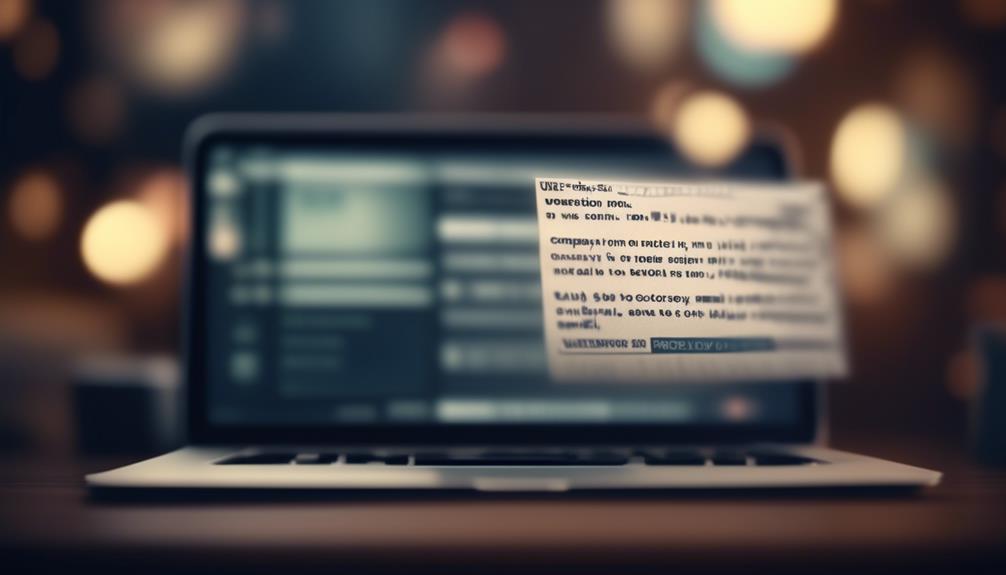
When implementing policy changes, it's crucial to craft clear and impactful email templates that effectively communicate the new guidelines to employees. These templates play a vital role in ensuring that all employees are aware of the changes and understand their implications.
Whether it's a new process, IT policy change announcement, vacation policy announcement, or sick leave policy announcement, the email templates should convey the importance of the changes and provide resources for any questions employees may have.
Our company understands the significance of clear communication in change management and has developed sample email templates that adhere to best practices for notifying employees about policy changes. These templates not only outline the new policies but also emphasize the reasons behind the changes and the benefits they bring to the company and its employees.
Importance of Notifying Employees About Policy Changes
How do policy change notifications contribute to a culture of transparency and accountability within the organization?
Notifying employees about policy changes is crucial for maintaining a positive work environment and ensuring compliance with company policies. It also promotes a smooth flow of operations and fosters employee engagement. Here's why notifying employees about policy changes is essential:
- Employee Benefits: Clear communication of policy changes allows employees to understand how the updates may impact their benefits and responsibilities.
- Employee Feedback: Notifying employees encourages open communication and feedback, creating a culture of transparency and trust.
- Compliance Assurance: It helps employees understand their obligations, ensuring that the organization operates within legal and regulatory frameworks.
- Consistency and Fairness: Policy change notifications promote uniformity in applying guidelines, preventing confusion and favoritism.
- Morale and Engagement: Keeping employees informed about policy changes boosts morale and reduces frustration, leading to higher engagement and productivity.
Best Practices for Writing Policy Change Letters
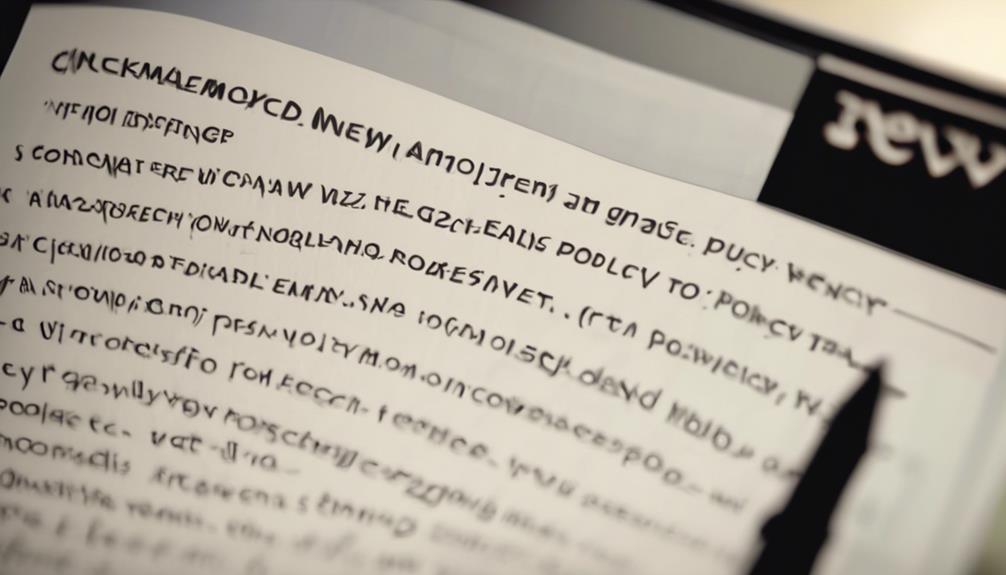
Implementing clear and effective communication is essential when writing policy change letters to ensure employees understand and embrace the new policies. When informing employees about new additions or changes in company policy, it is crucial to provide clear and concise information. We must also update employees about new policies, highlighting the expectations and benefits that come with the changes. Additionally, it's important to introduce a new policy in a manner that encourages employees to provide feedback and address any potential concerns or questions they may have. Expressing gratitude for employees' cooperation and understanding in the policy change letter can evoke an emotional response and foster a positive reception of the new policy. Finally, providing contact details for further inquiries or clarification regarding the policy change demonstrates transparency and openness to addressing any uncertainties. This table summarizes the best practices for writing policy change letters:
| Best Practices for Writing Policy Change Letters |
|---|
| Use clear and simple language |
| Highlight expectations and benefits |
| Address concerns and questions |
Utilizing Automation for Policy Change Communications
In our efforts to enhance clarity and efficiency in policy change communications, we've adopted automation as a means of ensuring consistent and timely updates to all employees. Utilizing automation for policy change communications offers several advantages:
- Streamlining the process of notifying employees about important policy changes
- Ensuring consistent and timely communication with employees regarding policy updates
- Reducing the margin for error in policy change communication, thus improving efficiency and accuracy
- Allowing for personalization and customization of policy change communications to suit different employee groups
- Enabling the tracking and monitoring of policy change communication, ensuring all employees receive and acknowledge the updates
This approach aligns with our commitment to providing clear and transparent communication regarding policy changes, ultimately aiming to minimize any disruptions to employees' work. By leveraging automation, Human Resources can effectively convey the rationale behind the policy changes and their impact on employees. This ensures that all employees are well-informed and prepared for any adjustments that may affect their work.
Frequently Asked Questions
How Do You Introduce a New Policy in an Email?
We introduce a new policy in an email by clearly stating the purpose and benefits.
Providing a brief overview of the changes.
Directing employees to the full policy for more details.
We also acknowledge any potential impact on their roles.
Offering support for the transition.
It's essential to use a positive and informative tone to ensure understanding and acceptance among the recipients.
How Do You Announce a New Procedure in an Email?
We announce new procedures in an email by clearly stating the updated process, outlining its impact, and providing any necessary training or resources.
It's essential to emphasize the benefits and purpose of the change to ensure understanding and buy-in from employees. This helps streamline operations and improve overall efficiency.
We should also address any potential concerns or questions to facilitate a smooth transition.
How Do You Inform Staff of a New Policy?
We inform staff of a new policy by drafting a clear and concise email outlining the details and reasons behind the change.
We ensure that the email is professional and uses language appropriate for our audience.
The email should be sent from a recognized authority figure and contain a strong call to action for staff to review the new policy and provide feedback if necessary.
How Do You Notify Staff of Updates to Policies and Procedures?
We notify staff of updates to policies and procedures through clear and timely communication. We ensure that all employees are informed about any changes that affect them, emphasizing the importance of the updates and directing them to relevant resources.
This allows our team to take action and seek additional help if needed. Our goal is to keep everyone well-informed and prepared to adapt to any new policies or procedures that may arise.
Conclusion
As we navigate these changes, let's remember that even the smallest ripples can create powerful waves of impact.
Our unity and understanding will help us steer through these policy changes smoothly.
Let's embrace this opportunity to work together and make a positive difference.
Thank you for your cooperation and support.
Natali – Editor in Chief (Strategy and Mastery, AI Expert) Natali, our Editor in Chief, is the driving force behind our content’s strategic direction. With a keen eye for detail and a deep understanding of market trends, Natali ensures that our content is top-notch and strategically aligned with our client’s goals. Her expertise in AI helps to seamlessly integrate advanced technology into our marketing strategies, pushing the boundaries of conventional marketing.
-

 Email Automation3 weeks ago
Email Automation3 weeks agoAutomated Email Marketing 101: A Beginner's Tutorial
-

 Email Warmup1 month ago
Email Warmup1 month agoWarm Follow-Up Email
-

 Email Design Hub2 months ago
Email Design Hub2 months ago3 Essential Tools for Email Marketing Design Success
-

 Email Marketing4 weeks ago
Email Marketing4 weeks agoWhat Is Email Marketing Advantages and Disadvantages
-

 Email Marketing1 month ago
Email Marketing1 month agoWhy Email Marketing Is Effective
-

 Email Template4 weeks ago
Email Template4 weeks agoCrafting the Perfect Book Club Invitation Email Template
-

 Search Engine Optimization4 weeks ago
Search Engine Optimization4 weeks agoSEO Checklist: Enhance Your Site’s Performance
-

 Email Marketing4 weeks ago
Email Marketing4 weeks agoDoes Email Marketing Work in 2024
















